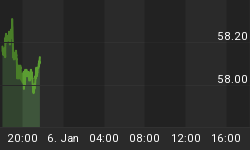
Last spring, the early 1980's drew my attention - primarily because of the comparative price structures of the secular low made in the U.S. dollar and the secular tops made in the precious metals markets. Further comparisons can be made to today of the impact a strengthening U.S. currency had during the 1980-1981 time period that structurally broke the CRB Index from its cycle high and had a negative impact on the equity markets for the better part of 1981 and 1982. This was also the time period where the interest rate cycle peaked.
In essence, the equity markets were range bound for more than two years while very large secular shifts were made in the currency, commodity and interest rate environments.
Sound familiar?
Look familiar?



And while we are currently on the flip side of the interest rate cycle, a similar reflexive impact will be felt as market participants grapple with what a change in the longer term interest rate paradigm will mean for asset prices going forward. History shows us that tops in the rate cycle are much swifter pivots, while lows have been more of a trough transition from low to higher yields. It would appear to me that it is not as clear cut as rising interest rates are necessarily bad for equities while declining rates are good - in as much as it is the change itself.

Clearly, this early 1980's transitional period had a strong influence on the movie Top Secret - which came out directly after these shifts. I believe they explain the anxiety well:
"Things change, people change - hairstyles change...interest rates fluctuate - who knows?"
















